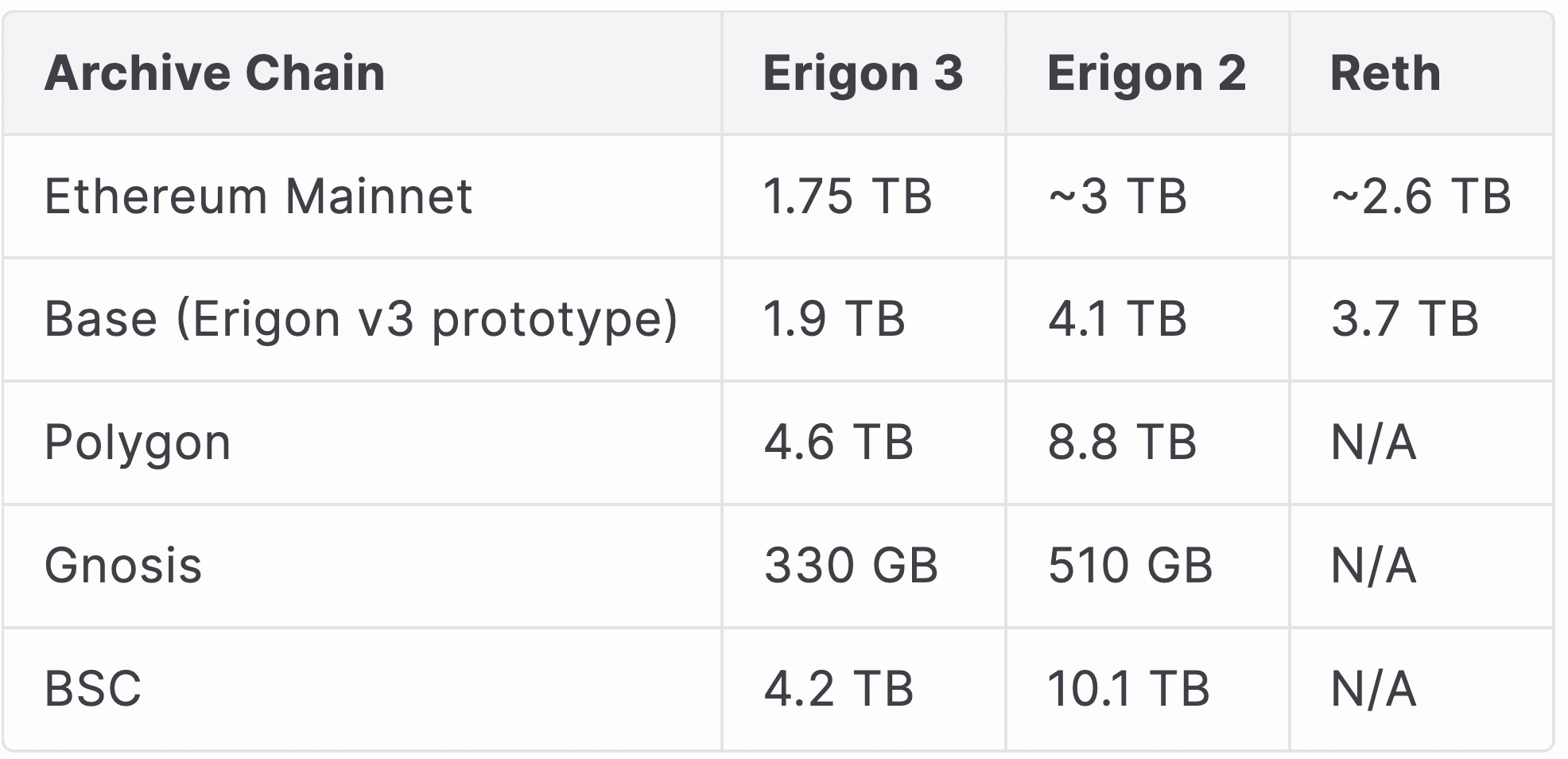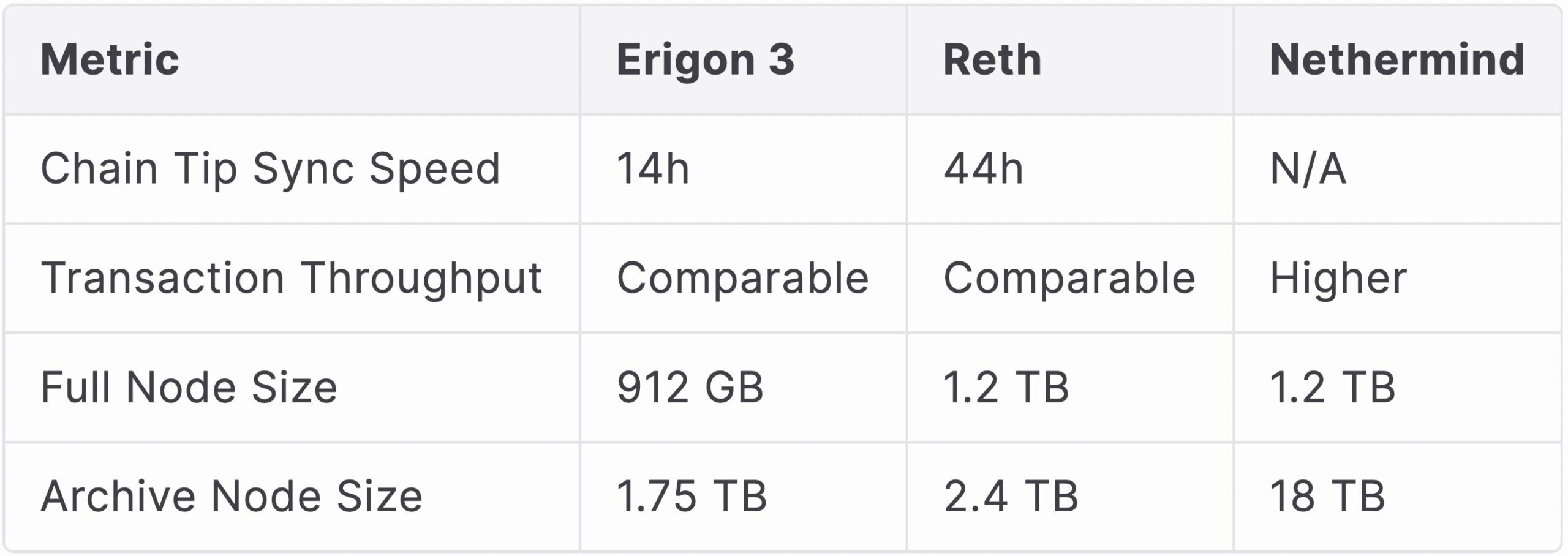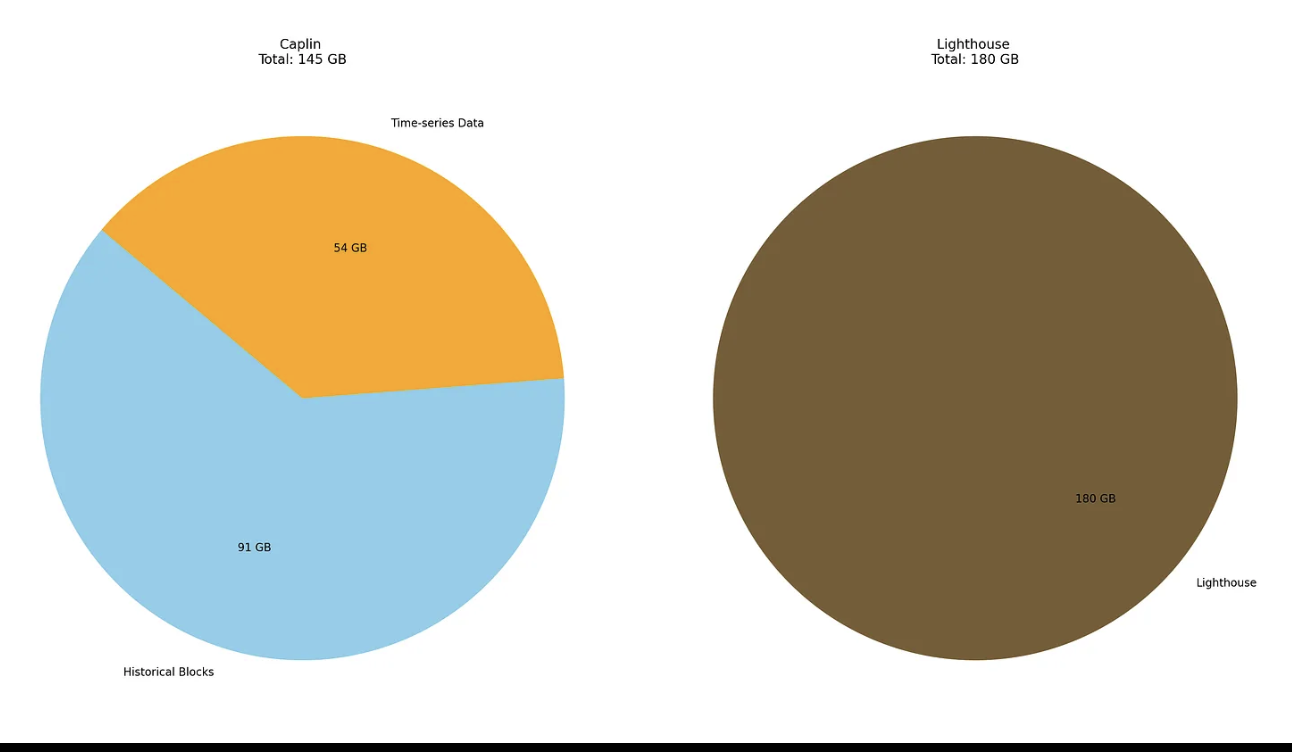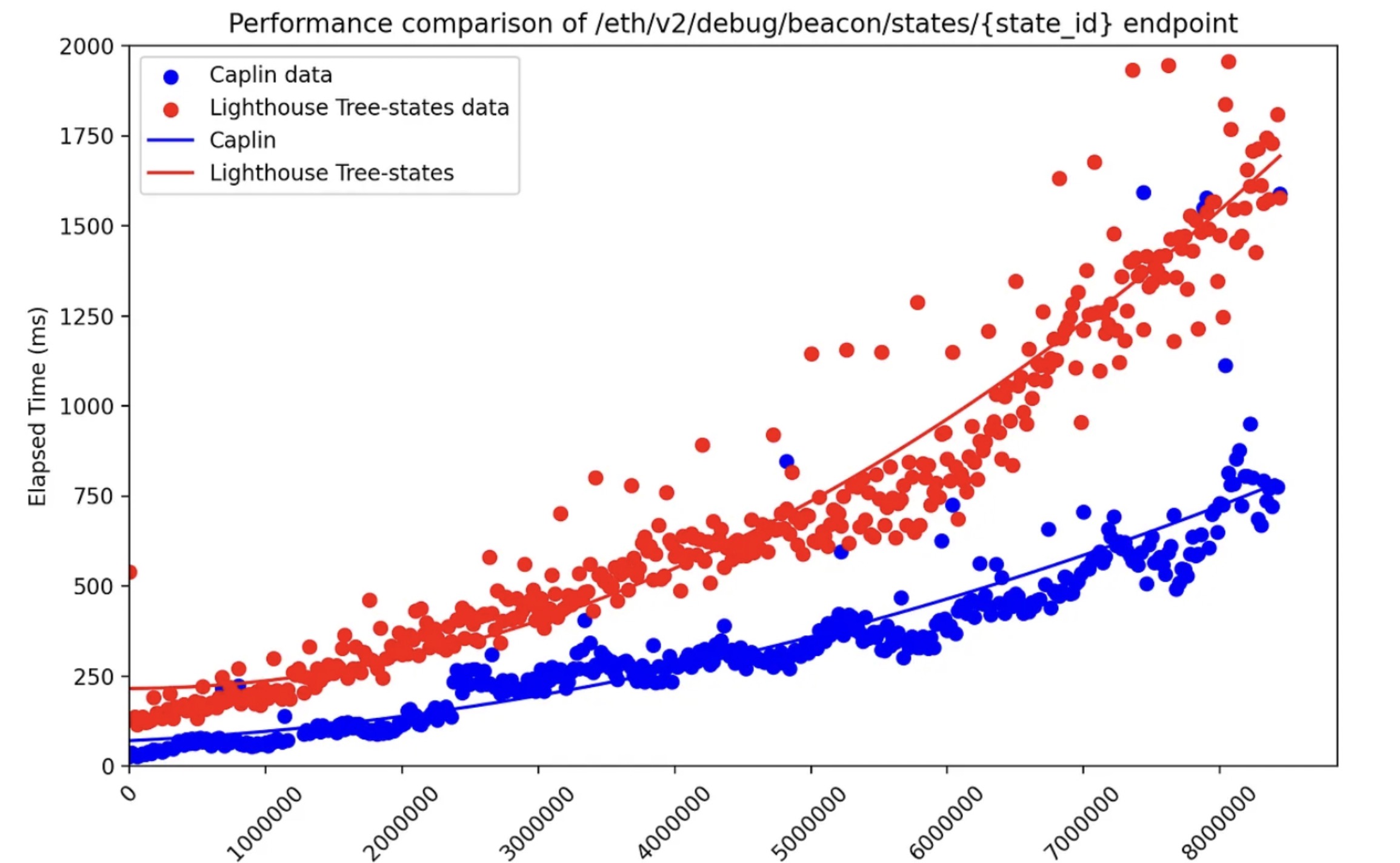We are excited to announce the first production release of Erigon 3, marking a significant milestone in blockchain infrastructure performance and reliability. Users are encouraged to migrate to Erigon 3 as Erigon 2 will be deprecated and decommissioned on May 01, 2025.
Erigon 3 Key Improvements:
- Enhanced Performance: Significantly faster synchronization and lower hardware requirements.
- Stability and Reliability: Extensive testing ensures robust node uptime.
- Future-Ready Architecture: Supports upcoming Ethereum developments.
Improved Execution Database Sizes:
Erigon 3 optimizes storage requirements across key blockchain networks:

These reductions significantly lower infrastructure costs and simplify node management.
Benchmarks Comparison (Execution Layer):
Erigon 3 sets a new standard in Ethereum node performance:

Erigon 3 offers unmatched efficiency and operational sustainability.
Flexible Data Model and Future Optimizations:
The dynamic data model in Erigon 3 enables continuous storage optimization:
- Erigon 3.1 (ETA 1-1.5 months): Targets Ethereum full nodes below 900 GB and archive nodes ~1.5 TB.
- Erigon 3.2 introduces historical eth_getProof support for enhanced dApp functionality.
We extend our heartfelt thanks to our developer, tester, and user communities for their invaluable contributions.
Upgrade to Erigon 3 today for the future of Ethereum infrastructure.
Visit our documentation for detailed upgrade instructions, or contact our community channels for support.
Welcome to Erigon 3—built for speed, engineered for stability, and designed for the future.
Staking Improvements in Erigon 3
With the release of Erigon 3, staking has become a top priority. This release introduces robust and efficient staking capabilities, significantly addressing previous limitations and dramatically enhancing performance, accessibility, and reliability for validators. We strongly encourage validators, staking providers, and the wider Ethereum community to run Erigon 3 with Caplin in production environments.
Focus on Staking Capabilities:
-
Integrated Staking Support: Erigon 3 now fully supports Ethereum staking through its embedded consensus client, Caplin, enabling validators to seamlessly operate both execution and consensus layers within a single, streamlined setup.
-
Optimized Resource Usage: By significantly lowering memory and hardware requirements, Erigon 3 ensures staking is more accessible and economically viable for validators, democratizing participation in Ethereum staking.
-
Improved Reliability: Extensive real-world testing and validation have ensured exceptional node stability, maximizing validator rewards by minimizing downtime, missed attestations, and block proposal failures.
We encourage pools and node operators to run Erigon v3 + Caplin in their staking setup as it is way better than Erigon v2 already
Caplin: Optimized Embedded Consensus Client
Caplin is specifically engineered for staking efficiency and has been rigorously optimized to deliver outstanding performance in production environments:
-
High Attestation Success Rate: Achieves a remarkable 99.7% attestation success rate, surpassing industry-leading clients like Lighthouse (98.9%).
-
Reduced Memory Footprint: Requires only 8 GB of memory, substantially less than Lighthouse’s additional 16 GB, making it the ideal choice for scalable and cost-effective staking operations with Erigon 3.
-
Accelerated Block Processing: Processes blocks in just 37 ms—over twice as fast as Lighthouse’s 81 ms—reducing validator downtime and boosting overall staking rewards.
Caplin’s archive node (Quick overview)
 Caplin is a little smaller, with 145 GB of additional disk footprint required, while Lighthouse stands at 180 GB. They are roughly the same in terms of sync speed and database population speed. The main difference between the two, when it comes to the data model, is that Lighthouse tree-states keep track of what essentially is a diff-tree of each instance of the state throughout history using xdelta3 (a delta-compression algorithm), while Caplin uses internal indexing and pre-loading to keep track of the changes as opposed to the tree-states approach. This leads to a slightly smaller disk footprint. However, this difference in approach also leads to faster data processing and extraction times. So, how do they differ in application latency?
Caplin is a little smaller, with 145 GB of additional disk footprint required, while Lighthouse stands at 180 GB. They are roughly the same in terms of sync speed and database population speed. The main difference between the two, when it comes to the data model, is that Lighthouse tree-states keep track of what essentially is a diff-tree of each instance of the state throughout history using xdelta3 (a delta-compression algorithm), while Caplin uses internal indexing and pre-loading to keep track of the changes as opposed to the tree-states approach. This leads to a slightly smaller disk footprint. However, this difference in approach also leads to faster data processing and extraction times. So, how do they differ in application latency?
Latency: Lighthouse Tree-States VS Caplin.
To measure latency, we decided to compare the timings on the Restfull API from both Beacon nodes. We selected three endpoints to test, which we believe to touch all the spots regarding data processing. The first and most important for reorg handling is how fast each client can read a previous state. We benchmarked the /eth/v2/debug/beacon/states/{state_id} in octet-stream to do this. Below are the results (lower is better):

Caplin’s Efficient Blob Storage
Caplin introduces an advanced blob storage system designed to significantly enhance the efficiency and accessibility of data retrieval within Ethereum staking operations. Recognizing the limitations associated with traditional blob storage methods, Caplin leverages innovative solutions to streamline data access and reduce dependency on the pruned Ethereum network.
High-Speed Blob Downloads via BitTorrent
Caplin employs BitTorrent for blob storage downloads, offering a substantial performance advantage over conventional methods:
-
Rapid Download Speeds: By using BitTorrent, users can achieve download speeds up to 1 gigabit per second, vastly outperforming traditional Ethereum network-based blob retrieval, which is typically slower and less consistent.
-
Reduced Network Dependency: This approach significantly decreases reliance on pruned Ethereum network nodes, ensuring blobs are readily available without network congestion or bottlenecks.
-
Scalable Data Distribution: BitTorrent’s decentralized nature enables highly scalable and reliable blob distribution, enhancing the overall robustness and resilience of Caplin’s staking infrastructure.

